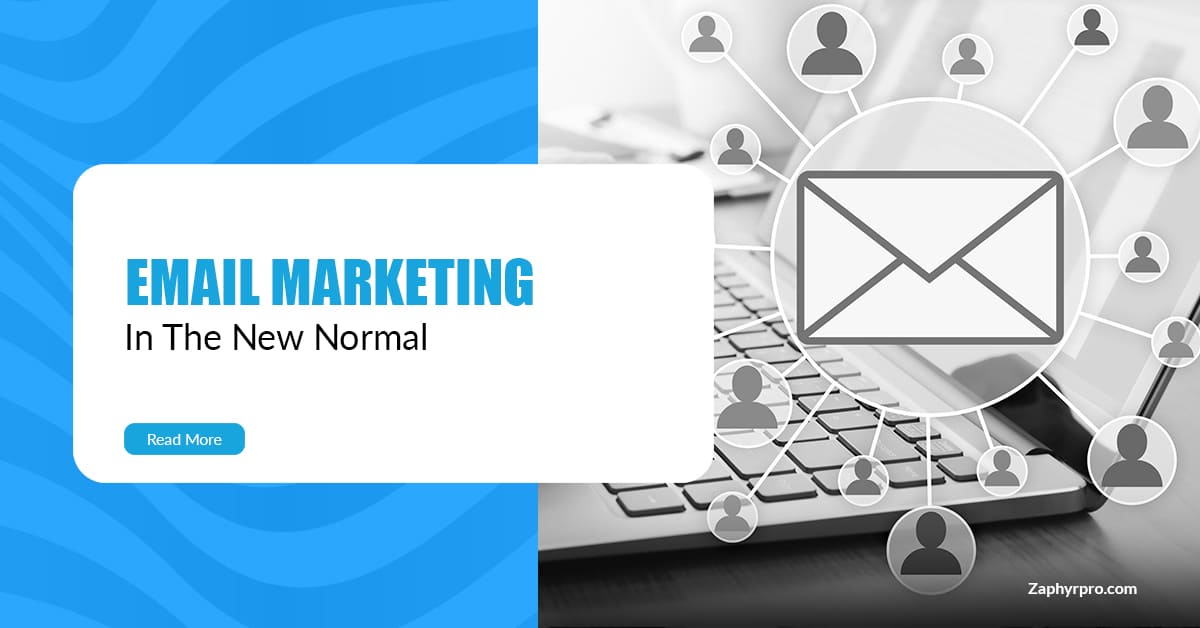Unlike traditional email marketing tactics, cold emailing is reliant on you reaching out to your potential customers who have not yet expressed an interest in your business’s products and/or services. This proactive approach, especially when executed correctly, can open doors to new business opportunities and enable them to significantly drive more sales by helping build a sustainable sales pipeline.
In this blog, we’ll be deep diving into the science behind cold emailing, discussing a few tried and tested tactics you can use to boost your cold email and sales efforts, particularly in the competitive US market. The unique challenges and opportunities one can find in the US, such as diverse customer segments and strict regulatory requirements, make it a necessity to adopt a strategic approach to cold emailing. By understanding and leveraging these factors, you can optimize your outreach efforts and maximize the efficiency and efficacy needed to achieve better results in cold email campaigns.
Before you dive down the rabbit hole and understand the psychology behind how to write high-quality cold emails, it’s important to give you perspective on exactly how successful cold emailing as a strategy is.
- In 2020, the global email marketing market was valued at $7.5 billion and is forecasted to increase up to $17.9 billion by 2027! (Statista).
- Currently there are over 4 billion email users. By 2025 it is expected that there will be over 4.6 billion people who use email. (Statista).
- 41% of marketers admit that email is their most effective marketing channel.
- 77% of marketers have reported an increase in email engagement in the last 12 months.
- 81% of small and medium business professionals believe that email marketing increases customer retention and helps acquiring customers.
- Email marketing generates, on average, $36 for every dollar spent.
- 18% of companies generate $70 in revenue for every 1 dollar spent.
- 59% of marketers believe email is twice as effective in generating leads than other mediums like social media and PPC.
- Email marketing acquires 40 times more customers than Meta & X.com combined.
The first ever email campaign was sent in 1978 and generated $13 million in sales!
Understanding the Psychology Behind Cold Emails
Knowing the psychology behind cold email is like having a secret weapon when it comes to cold outreach.
It’s an essential aspect of writing cold emails that make a significant impact. Understand that people usually react to cold emails when they see something in it that “clicks”. What exactly does click mean? Setting off a reaction in their brains which makes them stop aimlessly scrolling or skimming through your cold email.
Since it’s all about feelings, relationships, and understanding how others think, you need to be able to know how to establish and strengthen that psychological connection if you want your cold emails to be extremely effective for networking, sales, or any other objective.
It’s about establishing and developing relationships, and not just sending cold emails left and right while hoping to get a response.
Let’s examine a few psychology backed tactics you can exploit to assist you in crafting cold emails that increase conversions:
1. Reciprocity
Trying to include something of value in your cold email will help set the tone for a productive dialogue exchange with your prospect. Trust us, they’ll be more inclined to get back to you if they feel a sense of appreciation for the information you provided them.
It’s worth mentioning that it is a continuous, on-going process and NOT a one-time tactic, especially in cold emailing.
Follow-ups are just as crucial (if not more) for developing rapport with these prospects after the first promising response to your cold email.
You can thank them for their attention while highlighting the mutual benefits of your ongoing communication.
Take inspiration from our sample cold email below:
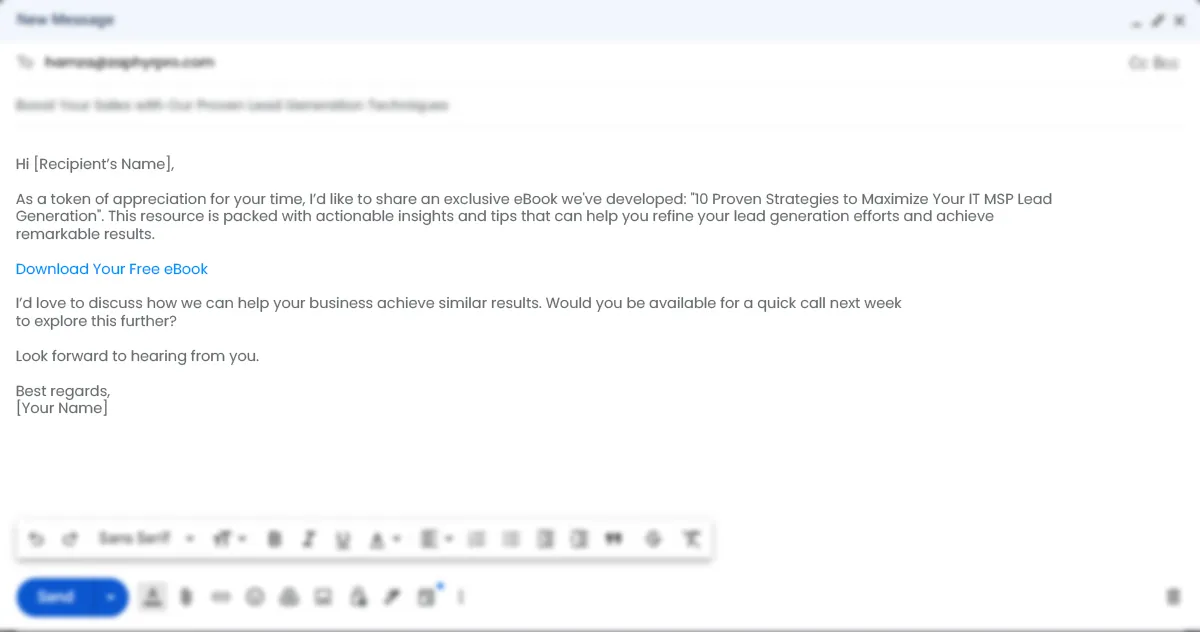
2. The Curiosity Gap
Curiosity is one of the most (if not the most) powerful tools in cold emailing. Humans in general are curious about new things, seeking new information, and love filling gaps in what we already know.
Enter the “Curiosity Gap” – the subliminal space between what we know & what we want to know. Picture a setting where someone is telling a story. But they don’t give away all the details right away. Instead, they tease the listeners with small hints or questions that make them “curious”.
You’re going to want closure and hear the end of the story, right?
That’s exactly what should be going on behind the scenes (or in the recipient’s head) when they’re reading your cold email. Use the curiosity gap to your advantage and not send them just plain, simple messages. Bait them with an invitation to an irresistibly intriguing conversation, and watch them flock towards you like sheep.
If executed properly, it’ll be an extremely powerful cold emailing tactic that encourages your recipients to act.
Just remember to not disclose everything all at once, especially in the initial emails. Pace it out over several steps or weeks. One of the ways you can do this is by creating multiple follow-ups, with each email offering something unique and valuable to the prospects while gradually revealing more and more.
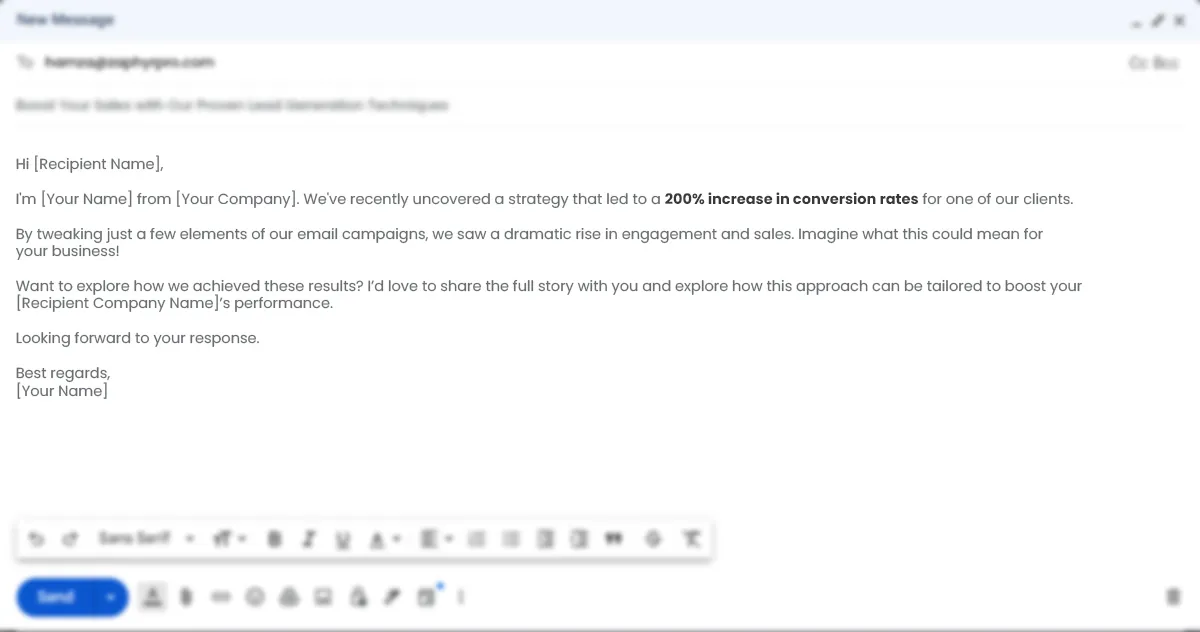
Key Elements to Note:
- Compelling Subject Line: The subject line hints at significant benefits but doesn’t reveal how they were achieved, prompting curiosity.
- Teaser in the Body: The email body provides a glimpse of the success but withholds the key details, encouraging the recipient to reply for more information.
- Personalization: Addressing the recipient by name and mentioning specific results helps to create a connection and makes the email feel less like a mass send.
3. Social Proof - They Said It, Not Me!
Nothing, and we mean nothing helps get your point across better than social proof in cold emailing. The simple incorporation of genuine feedback, of others who have used your products or services, in your cold emails can be a complete game–changer.
Be honest, when was the last time you availed or bought something that had zero reviews?
Think of it as someone vouching on your behalf, it helps make your cold email message sound way more genuine, relatable, and convincing.
One good example of the application of social proof psychology seen in our daily lives (but fail to recognize) is in restaurants. Picture this: you’re walking down the street and come across two restaurants. One is completely empty while the other one is extremely busy, and someone asks you which one you think is the better one?
Our money’s on you choosing the latter.
How this works is, our subconscious tends to assume the one with more patrons is the better one, making us more inclined to place the busy one on a higher pedestal. This may not always be the case, but it shows us a glimpse of how we psychologically respond to seeing a very busy restaurant as opposed to an empty one.
The same thought process can be applied in cold emailing. If you already have a bunch of people who have used your product or service and are satisfied with it, use it to your advantage.
Let’s go through the different types of social proof’s you can include in your cold emails.
Case Studies
By including real life examples of your success stories in cold emails, particularly how you helped solve challenges a client was facing, you can help instill a sense of security in prospective clients that they too will have a similar, if not better, experience.
Because hearing about the positive experiences others’ had with your product or service helps reinforce its value.
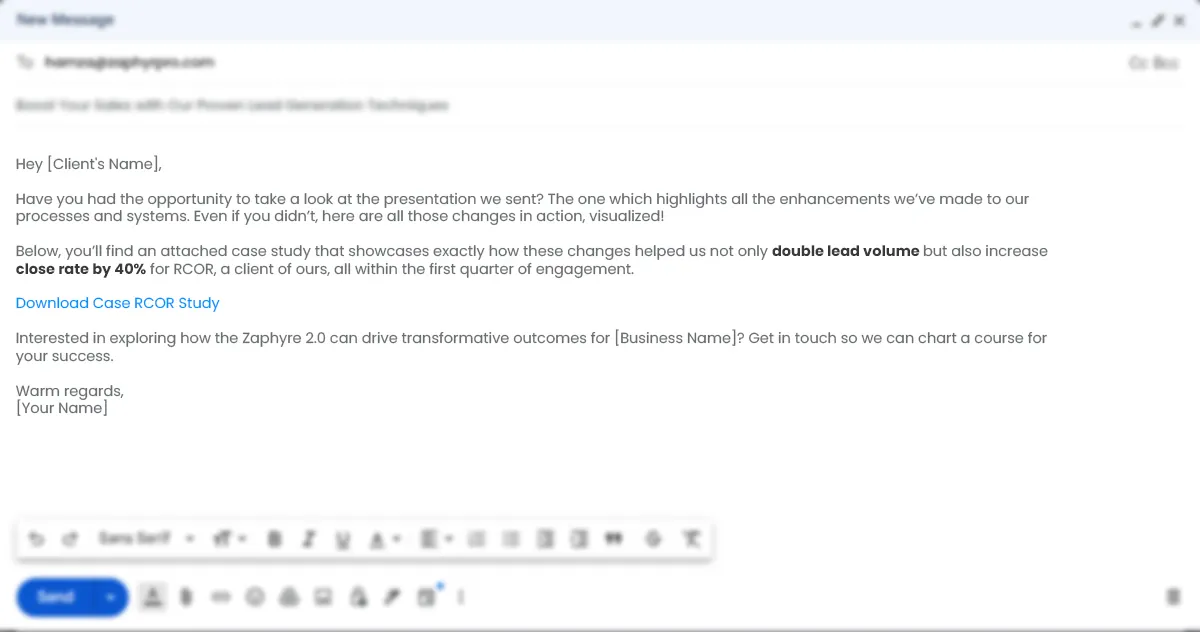
Testimonials
Another example of social proof is mentioning positive reviews or ratings given by your past clients on your product or service. Including this feedback in your cold emails can help build trust, and even greatly influence their decision-making process to be in your favor.
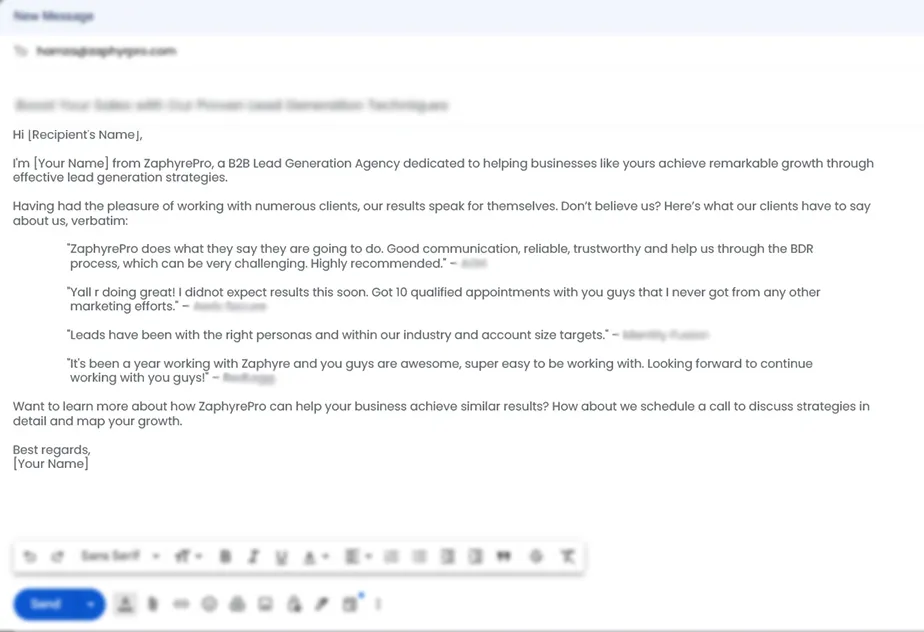
Updated Statistics
The simple act of including (and highlighting) statistics and numbers in your cold emails can make the difference between night and day. How you use it to your advantage is up to you, but you can try including things such as how many customers you’ve catered, customer satisfaction rate, or the number of projects you’ve successfully completed, all to emphasize the growing popularity and reliability of your offering.
The example below is part of a cold email campaign we ran for one of our prestigious clients. It’ll help showcase how you can infuse statistics effectively into your cold emails to help get your point across.
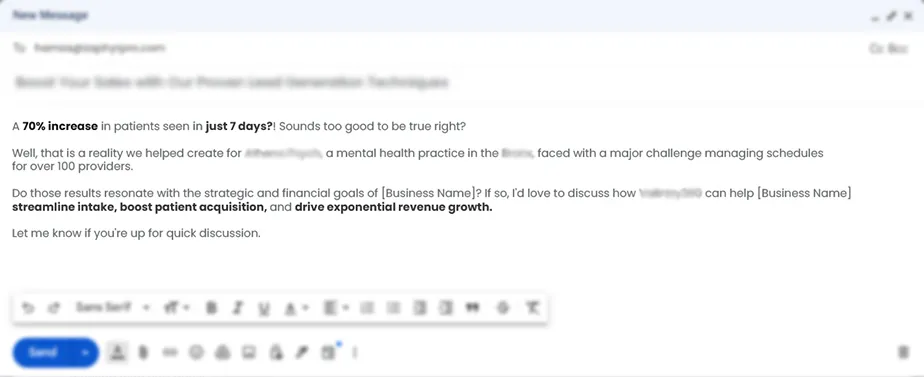
Consistent Recognition
Don’t be afraid to speak up. Use everything you can to your advantage, especially your Wins! Mention any awards or achievements you or your company recently received, to help position yourself as a credible industry leader, just like how we did below.
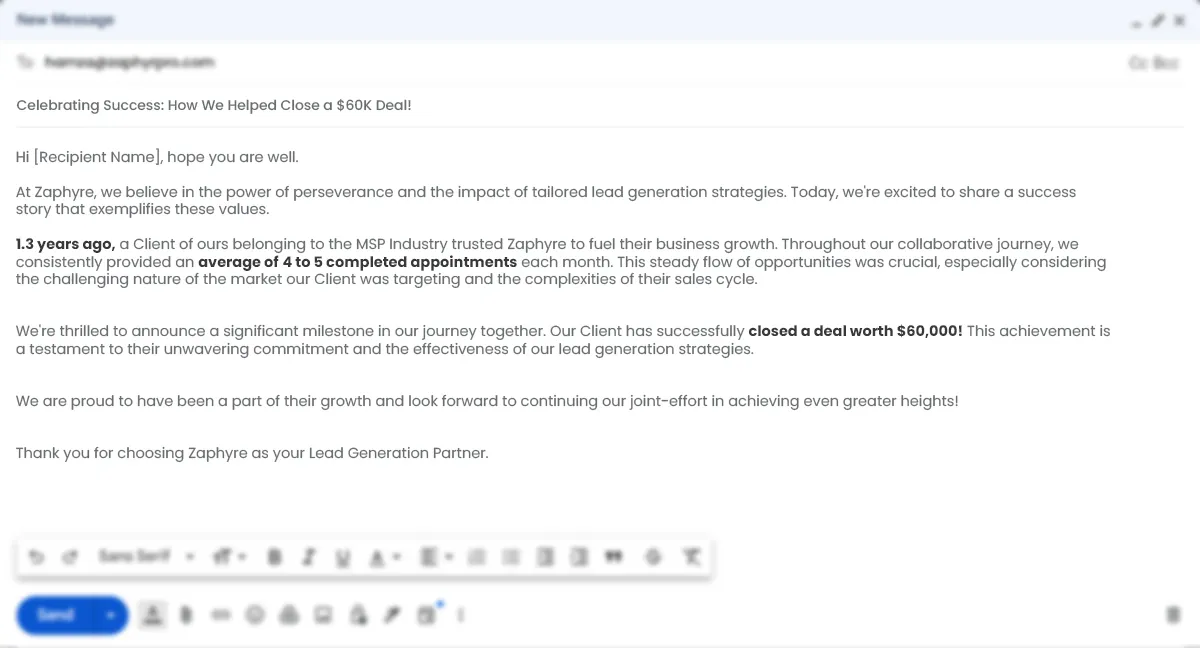
4. FOMO
People generally have an innate fear of being left out. Using it to your advantage is probably one of the most important and successful tactics you can use in marketing.
Scarcity tactic makes use of a person’s Fear Of Missing Out, aka FOMO, on valuable opportunities or resources that are limited in availability.
In the context of cold emails, you can make use of the scarcity tactic to help create and instill a sense of urgency that can motivate the recipient to take action!
Here are a few practical ways to use the scarcity tactic to your advantage in cold emails:
You Snooze, You Lose
If the crux of the message has been communicated and your prospect is still yet to respond, one of the ways you can encourage a response from them is by reminding them your offer or opportunity is a limited time offer.
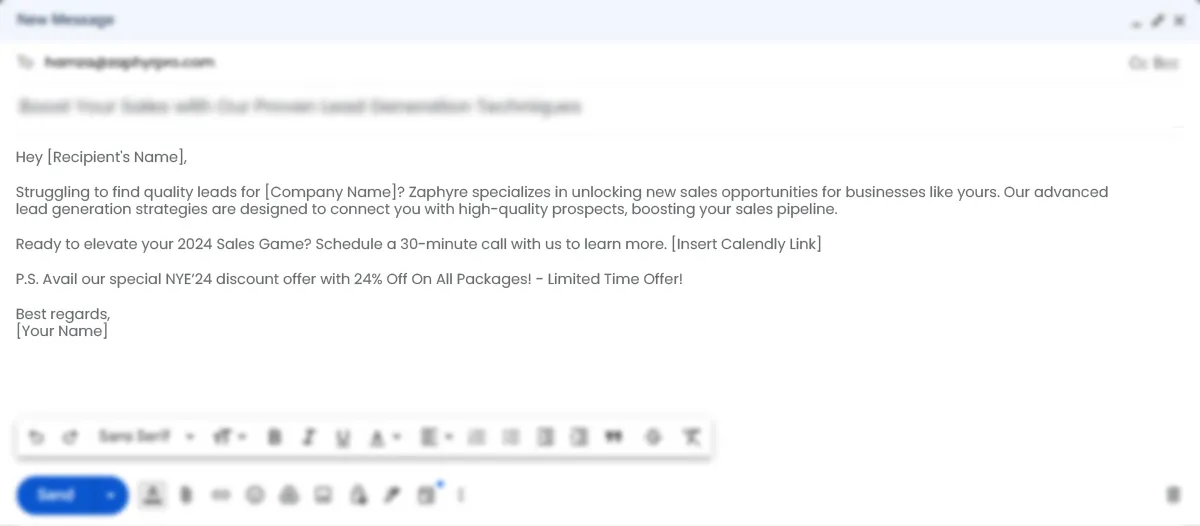
Exclusive Access
If you find yourself three or four email follow-ups deep in with crickets still chirping in your inbox, it’s time to try out a different approach. You can try highlighting the unique or exclusive nature of your offer. Take inspiration from how we used this tactic for one of our clients.
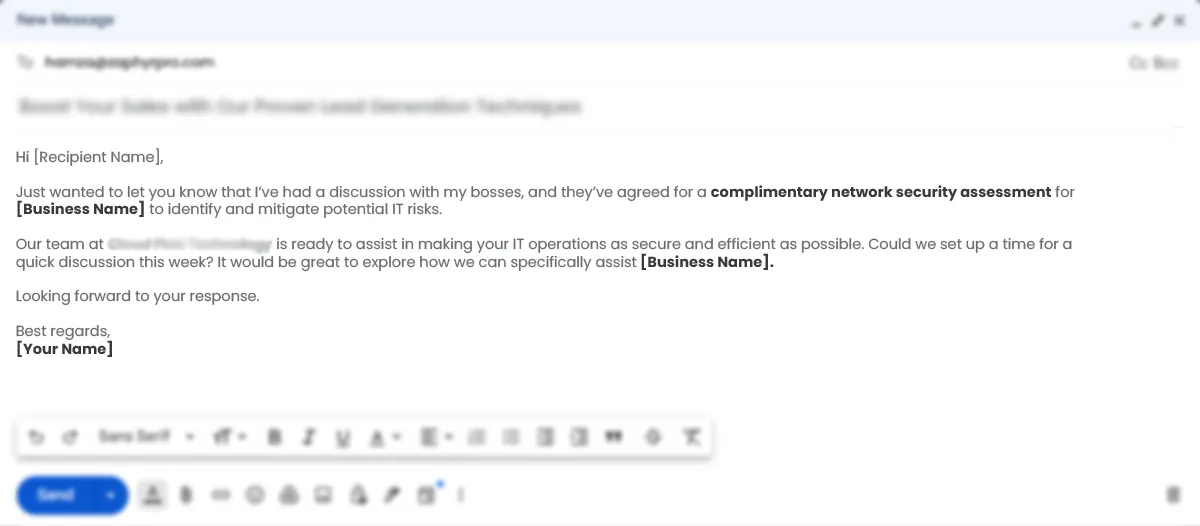
Holiday Hype
The usage of this particular FOMO tactic is more dependent on whether or not your cold email outreach is aligning with any major or minor holiday season(s). If the option is available, use it to your advantage as it can be extremely effective (and lucrative).
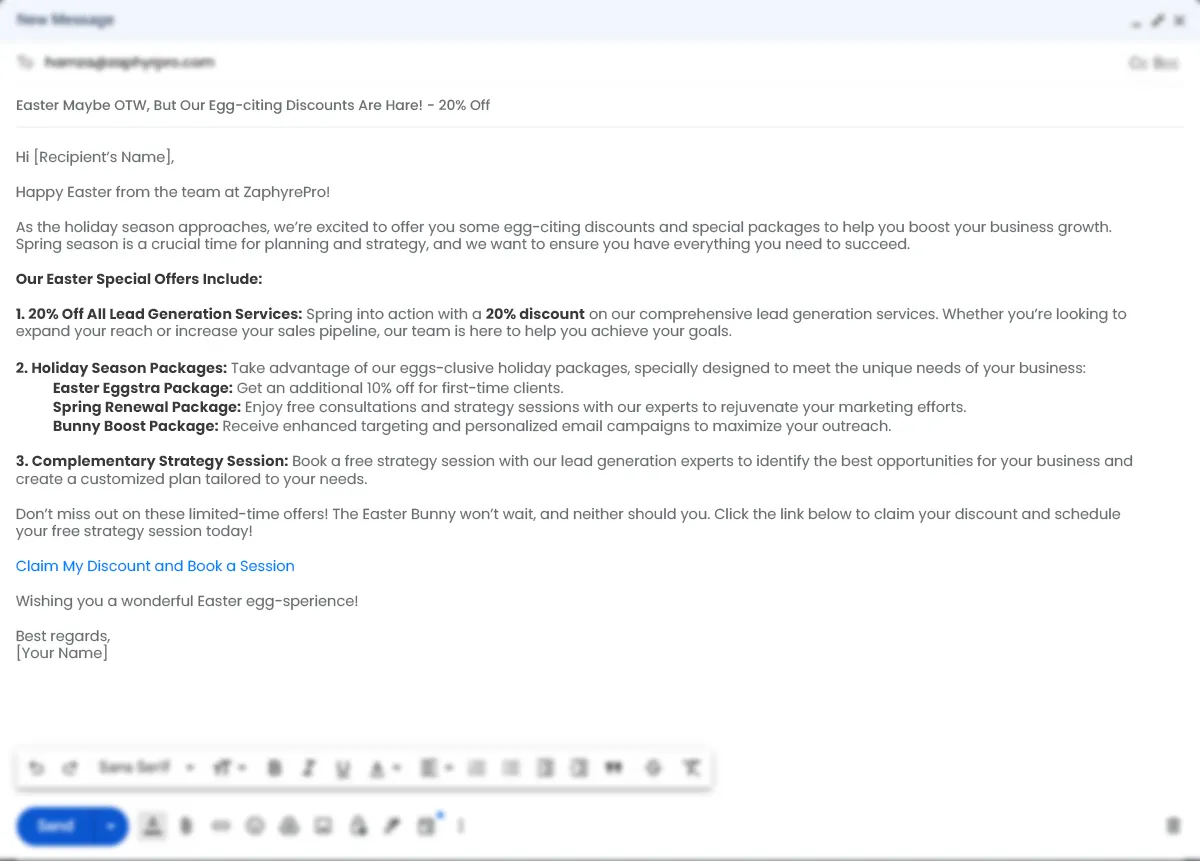
Countdown Timers
Although difficult to pull off in plain text based emails, you can still use Countdown Timers to help create a sense of urgency in the recipient’s mind.
It’s important to highlight that this tactic should be used sparingly and cautiously since all it does is increase the level of desire for an already sought-after product or service. If it isn’t already drawing long queues, adding a timer on it isn’t really going to make much of a difference, is it?
Data-Driven Strategies
Now that we’ve discussed some of the psychology-based tactics, let’s move onto some data-driven strategies you can employ to maximize the efficiency and efficacy of your cold email outreach.
Optimal Timing
Timing can make or break a cold email campaign. Various studies have shown that the best times to send emails are typically mid-morning or mid-afternoon. This allows you to avoid the early morning and late evening rush hour when your prospects’ inboxes are flooded with email.
Analyzing your target audience’s behavior and experimenting with different send times can help identify the optimal timing for your emails. We’ve gone ahead and created two infographics that will help visualize the effectiveness optimal timing has on cold email outreach.
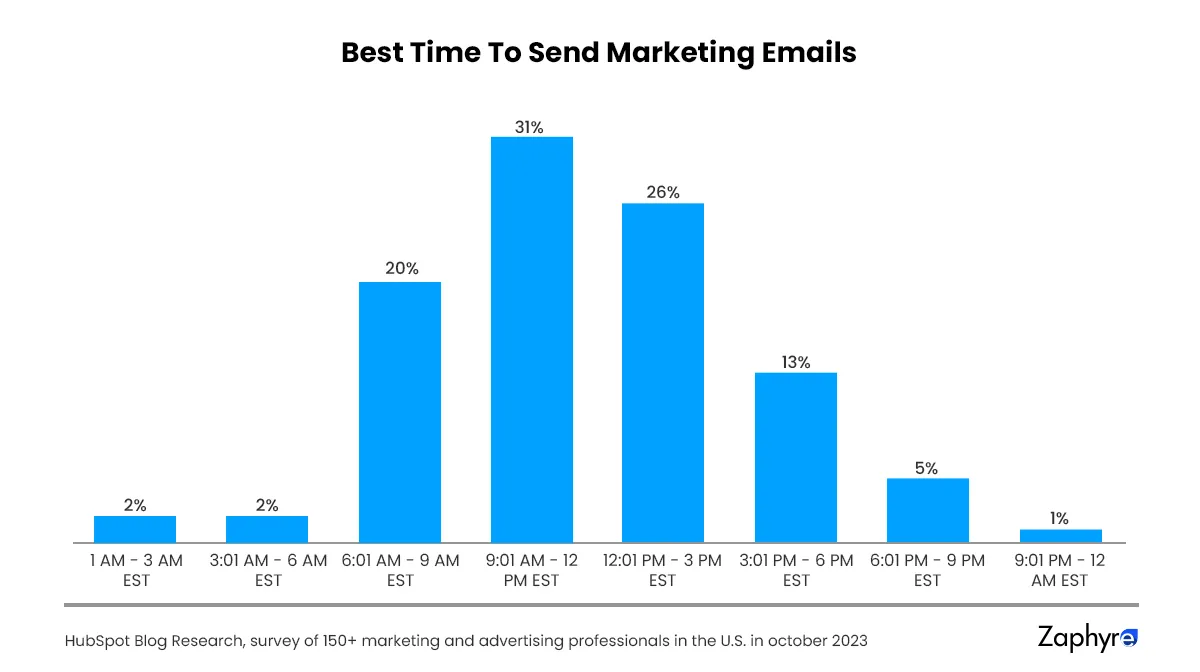
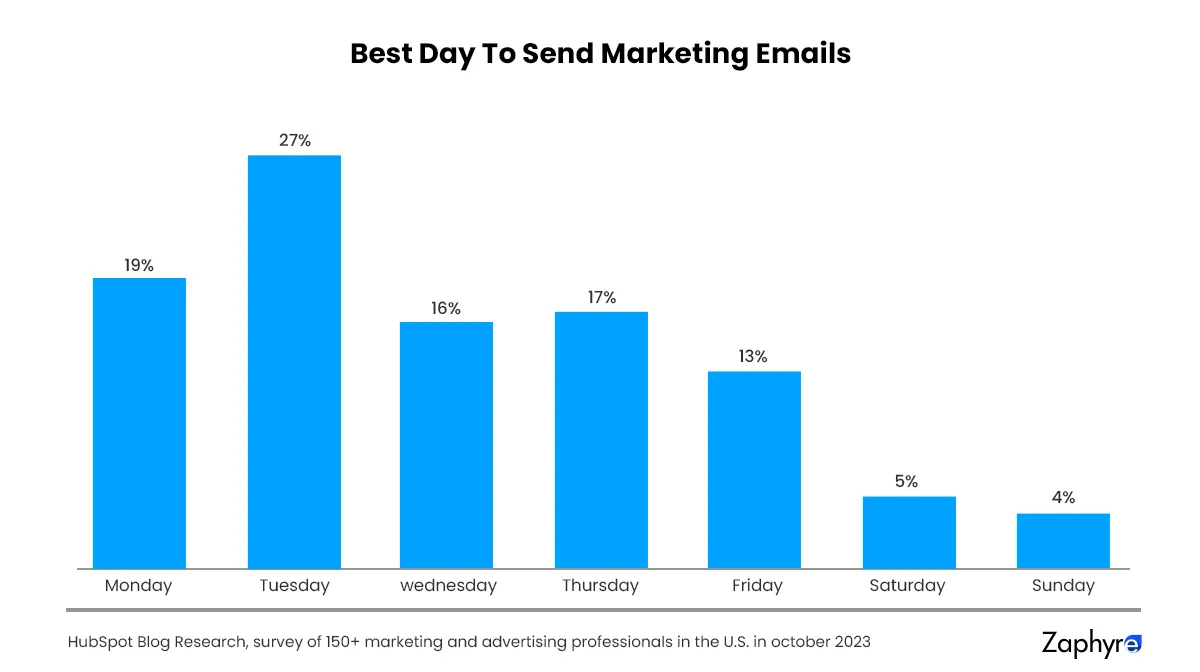
Subject Line Analysis
The subject line is the first thing recipients see, and determines whether or not your email is worth opening or not.
As a B2B Lead Generation Agency, we’ve come up with a three-part parameter that can be used as a guide to create cold email subject lines that work and give the highest open rates; is it concise, is it personalized, and is it in the form of a question?
You can take inspiration from the examples below:
- “[First Name], Ready to Boost Your eCommerce Sales?”
- “Can Our Strategy Help [Company Name] Double Conversions?”
- “Interested in Seeing a 20% Sales Increase, [First Name]?”
- “[First Name], What’s Missing from Your eCommerce Growth Plan?”
- “Is Your eCommerce Business Missing Out on These Leads, [First Name]?”
A/B Testing
A/B testing, or split testing is another strategy you can use to test and optimize your cold email outreach. Essentially, it involves sending two or more versions of an email to different segments within your audience, to see which resonates more with them and ultimately performs better.
This method allows you to refine various elements of your email, such as subject lines, email body, and call-to-actions, on the basis of various metrics and data. Continuous A/B testing can lead to incremental improvements and better overall campaign performance. You can take it a step further and add Spintax to keep the content exciting and fresh.
Steps for A/B Testing:
- Identify the Element to Test: In this case, the subject line.
- Create Two Variations: As shown below, Version A and Version B have different subject lines.
- Segment Your Audience: Split your email list into two groups, ensuring each group is statistically significant.
- Send Emails: Send Version A to one group and Version B to the other.
- Measure Performance: Track open rates, click-through rates, and response rates for both versions.
- Analyze Results: Determine which subject line performed better based on the collected data.
- Implement Findings: Use the more successful subject line in future email campaigns.
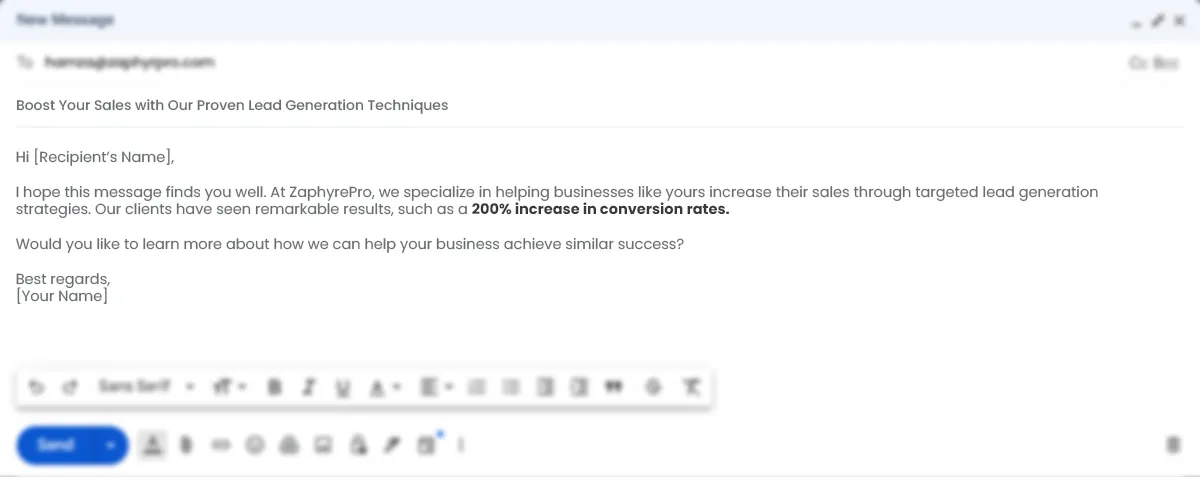
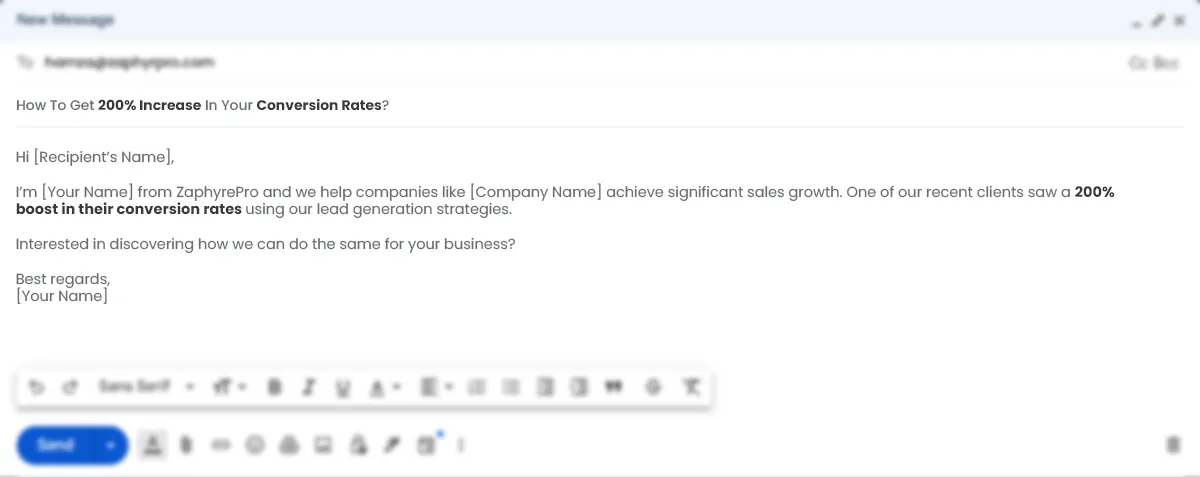
The Ultimate Guide to Cold Calling VS Warm Calling: Sales Strategies Decoded.
Advanced Tactics
Let’s move onto some more advanced tactics that you can use to significantly enhance the effectiveness of your cold email outreach.
Segmentation
Segmentation involves dividing your email list into smaller groups based on specific criteria, such as industry, job title, or behavior. Segmentation allows you to tailor your messages according to the unique needs and interests of each niche or sub-segment, resulting in a more relevant and effective outreach.
Think of it this way, you’re targeting multiple individuals working with the same company, hoping at least one of them would get back to your cold email. To maximize your chances of establishing a connection, tailor your message according to their role and the unique pain points they’re faced with.
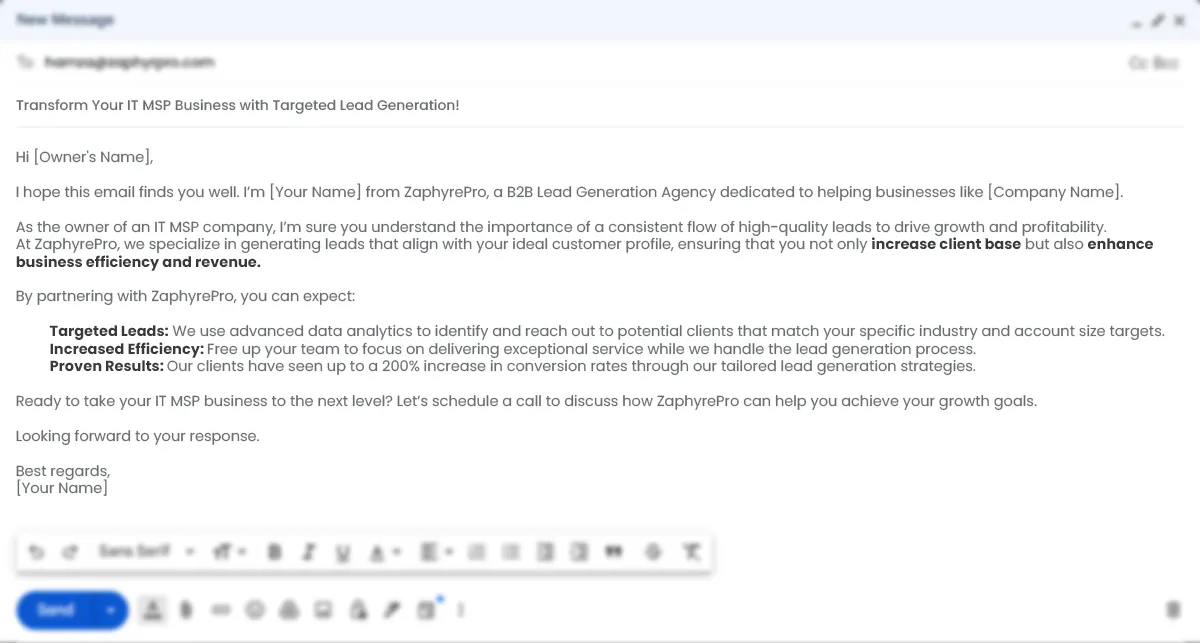
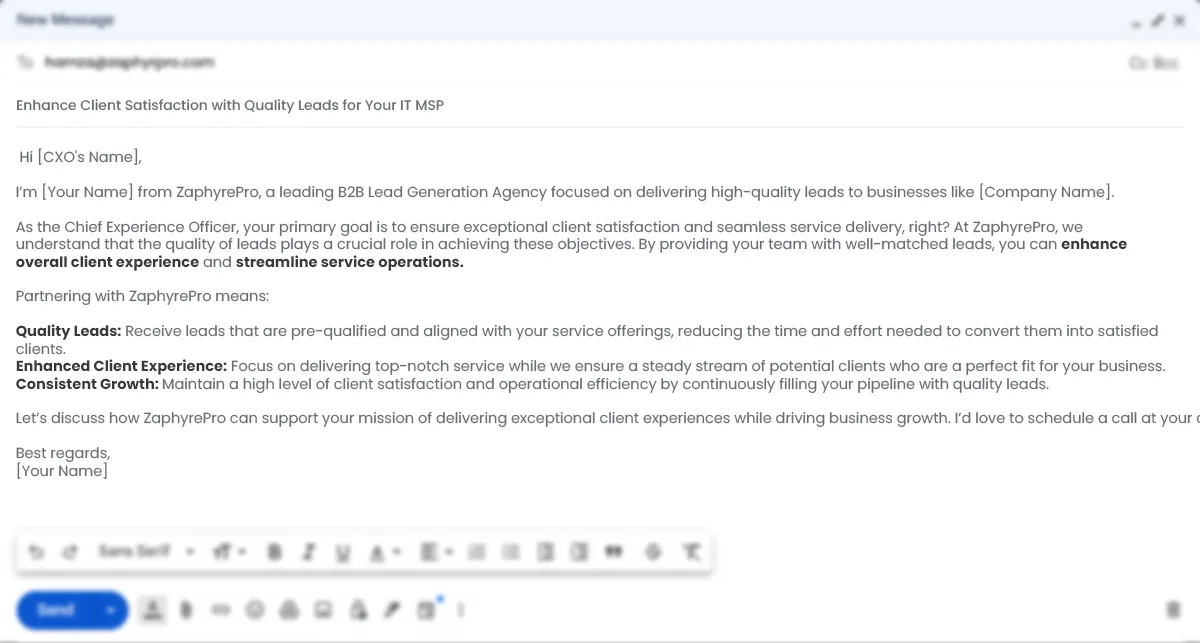
Tools For Assistance
Making use of cold emailing tools, such as Customer Relationship Management (CRM) systems and email marketing softwares, can help streamline your cold emailing process. These cold email tools are often packed with a plethora of features and functionalities that range from; managing contact lists, scheduling follow-ups, tracking responses, etc, ensuring that no potential lead falls through the cracks. Automation also allows for more consistent and timely communication.
We’ve compiled some of the top cold email tools for automation available in the market today.
- Mailshake: Advanced Cold Email Outreach Software
- Outreach: Solid CRM + Cold Email Platform
- Smartlead.ai: Cold Email Warmup + Deliverability With AI
- Close: Cold Outreach at Scale for Startups & SMEs
- HubSpot: All-in-One Marketing Automation Solution
- Instantly: Cold Email Software
- Customer.io: Email automation Tool w/ Built-in Behavior-triggered Emails
- Lemlist: All-in-one Outreach Solution
- Streak: CRM for Gmail
- GMass: Free Email Warmup Tool
It’s worth mentioning that before you sign up to use any tools for assistance in B2C or B2B cold email campaigns, have a clear understanding of exactly what your needs are and what you’re looking for, to check if the tool you’re signing up with offers them (or not). The smart choice would be to go for the option that offers you the best value of money.
Behavioral Analytics
One of the more advanced tactics you can use is tracking and analyzing the behavior of your recipient through open rates, click-through rates, and response times. It’ll provide you with valuable insights into how well your B2C or B2B cold email outreach is performing (or not).
You can even use this data to refine and improve future strategies for better alignment with the needs and preferences of your ideal target audience.
How Successful Cold Emailing Is - A Success Story
If you still find yourself questioning the effectiveness of a good cold email outreach, then we want to share a Case Study with you of How A First-Time Founder Raised $1m By Cold Email.
It’s about Dhruv Ghulati, the CEO of Factmata. Factmata is an AI startup that’s raised $3.5m over the last four years to fight online misinformation. Through cold emailing, he was able to raise $1m seed round from some of the biggest names in tech and investing:
- Mark Cuban (billionaire, Dallas Mavericks owner)
- Biz Stone (co-founder, Twitter)
- Mark Pincus (founder, Zynga)
- Craig Newmark (founder, Craigslist)
Believe it or not, but he made use of some of the cold email tactics we’ve discussed and explained in this blog. This success story is just one of many hundreds more, if not thousands, of how different businesses and individuals have used Cold Email Outreach as a stepping stone to achieve something greater.
TL;DR
Cold emailing, when done right, can be a powerful tool to boost sales and generate leads. By understanding the psychology behind email responses, leveraging data-driven strategies, crafting compelling messages, and using advanced tactics, you can enhance your cold email effectiveness.
We encourage you to implement the cold email tactics discussed in this blog and measure your results for B2C or B2B cold email outreach. Experiment with different strategies, track your performance, and continuously refine your approach to achieve the best possible outcomes.
Looking ahead, a few emerging trends such as AI-powered email personalization and advanced behavioral analytics are set to further transform the landscape of cold emailing. Staying informed and adaptable will be key to maintaining a competitive edge in digital sales strategies and B2B cold emails.
Ready to take your cold emailing to the next level in the US market?
Now that you've unlocked the secrets of cold emailing in the US market, are you eager to implement these powerful tactics and see results? Don't wait! Schedule a free consultation with our cold email experts today.
We'll help you:
- Craft high converting cold emails that grab attention and drive sales
- Target the right audience in the competitive US market
- Optimize your cold email strategy for maximum impact






